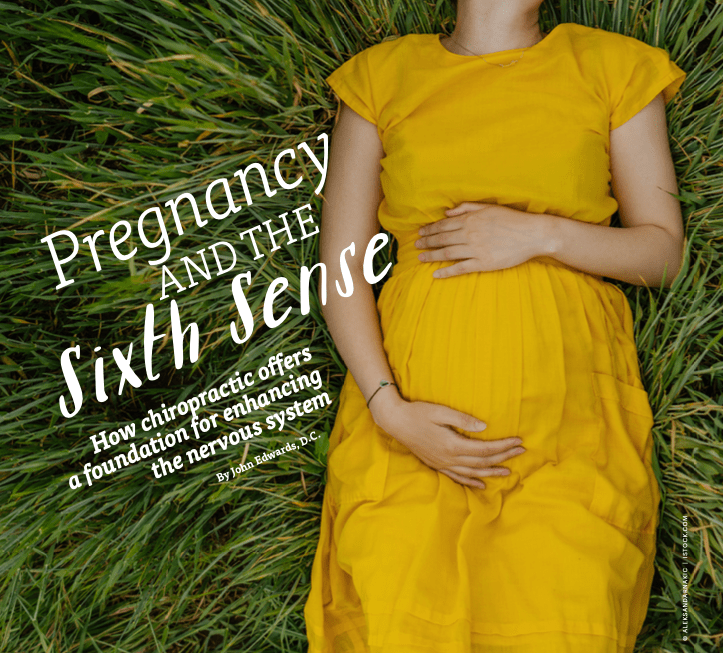Missed Part 1? Find that there: The Third Nervous System
Imagine you’re hanging out by a riverbank with some co-gatherers a couple million years ago, looking for some fish, and you hear a low and menacing growl behind you. To your right the net-mender’s little baby has dropped her straw doll into the water and starts crying. You look over your shoulder and emerging from the distant cypress grove is the hairiest, toothiest, meanest-looking beast you’ve ever seen. He glistens with drool in anticipation of making you his dinner.
This is a stressful situation. On one hand, it would make complete, logical sense to toss the beast an appetizer in the form of a screaming baby and make your get-away. If you think purely about the common sense of it, that would be the best route to self-preservation. Yet everyone reading this is thinking “You have to pick that baby up!” It’s funny when you think about it; not all mammals do that. Baby horses are born and can fairly immediately run from danger. Eight horses won the Kentucky Derby before their third birthday. Your toddler may be fast, but I’m pretty sure he’s not going to beat Usain Bolt in anything but a diaper soiling contest.
Yet here we are as a species doing something that is completely illogical, running with a mini “I’m hiding over here!” sign, in the hopes that this turns out well. Thanks, frontal cortex! The frontal cortex and other relationship centers in the brain have evolved not for your benefit, but for that baby’s. We wouldn’t have gotten very far as a species if it weren’t for a couple of rather amazing developments. For one, the round shape of a baby’s head, face, and disproportionate size of their eyes with the rest of the face is something we find absolutely adorable.
Second, and this is something I teach to all of my new parents, babies have developed a set of sounds that tell their caretakers exactly what they need. Like Cam Jansen had a photographic memory that helped her solve mysteries, Priscilla Dunstan has a echoic memory where she has perfect recall of sounds. Priscilla has used her talent for good; she’s been a violinist in several world-renowned orchestras. When her son was born she noticed he kept making the same five noises before he’d start to cry. When she went out with her new “mom” ears, she started noticing every other baby made essentially the same sounds regardless of language or ethnic background. Brown University researchers came to Australia to test out what she was claiming and credited her with discovering pre-cry; that is, the noises were indeed predictable expressions of need that when left unmet would lead to crying.
Here is Priscilla telling her story to Oprah a few years ago.
So now we have evidence of structural and behavioral adaptations that let an adult know when an infant has a stress response. These come packaged with a baby for a reason. In the earlier blog on The Third Nervous System, I explained the progression of brain waves from a delta (subconscious) pattern in our first year of life to alpha (creativity) and eventually beta (rational thought).
In basic terms a baby has a brain wave pattern that scientists have designated as the subconscious mind. All of the keys to survival are written in this program by a specialized set of nerve cells. Neuroscientists have identified these brain cells, called mirror neurons, and suggest the reason we have them is to write a program for what to do later in life when we encounter a threatening situation.
In early childhood the brainwaves shift into a conscious, creative pattern. This level of activity is responsible for everything from pretending a broomstick in the kitchen is a horse galloping through the forest to turning a passing shadow into a monster hiding in the closet. In adulthood we revisit this creative wave pattern in the early stages of sleep, right around the time we wake up, and during deep meditation. It’s close enough to the subconscious level that we have the power to re-program our neurological patterns by visiting this state.
The final brainwave pattern is the signal of rational thought. This mature pattern begins around 7-10 years old and persists into adulthood. It is this pattern that can discern the difference between the broomstick and an imaginary horse.
Here’s why “Cry it out” may be one of the most mis-guided parenting philosophies in our generation. The social aspect of our nerve system, as adults, is designed in part to help babies survive. The programming that happens during that first year of life tells the infant’s brain which aspect of the nerve system needs to be active during times of stress in order to adapt to the environment. The preferred component is the one that gets your needs met. As a tired baby you try communicating the sound “Owwww” to your parents to tell them you’re tired (Social Nerve System). They either respond to your cue, in which case this communication strategy seems to work, or you go further down the evolutionary aspect of the nerve system to the Sympathetic Nerve System.
What does Sympathetic, or “Fight/Flight” look like in a baby? It’s ANGRY CRY. The sympathetic system evolved to move nerve and blood flow away from the organs and into the arms and legs to prepare for battle or run like heck. In a baby it looks pretty much like the personification of a hornet’s nest. The arms are shaking, the fists clenched, face is flushed, eyes are squeezed shut with tears coming out, and Holy Moses did you ever know your child had that kind of lung capacity? If for a variety of reasons a set of parents regularly wait until you’ve gone the full Incredible Hulk, those delta waves pay attention. Later in life when you’re stressed the way you adapt to the environment kind of like the song suggests- when the going gets tough, you either get tough right back or get going. The main problem with this is while useful in short-term situations, a consistently high level of sympathetic activity leads to a whole slew of health problems. Stress-related conditions like heart disease, metabolic syndrome, obesity, diabetes, and cancer (Elenkov, dos Santos Moreira, Seyfried and Shelton, plus this good Huffington Post review) have all been linked to high circulating levels of the chemicals produced in the fight/flight arm. If you’ve ever been associated with the term “adrenal fatigue,” this is your huckleberry.
We have a lot of lizards in Florida. Reptiles have the most ancient brains of the vertebrates, and their initial response to my dog discovering them is to pretend they are part of the screened porch. They freeze. Just like in Jurassic Park, if you don’t move the T-Rex won’t see you. Playing dead, the parasympathetic response to stress, is the last resort of the single-celled organism, the lizard, and the frustrated baby alike. If yelling for attention hasn’t worked, maybe this simply isn’t an environment where needs are met. The body shuts down the emergency response and begins to focus on conservation and survival. A cell can only have one of two states, growth or protection. Why waste the fuel on growth? Who needs higher brain functions or has time for concepts like fairness, compassion, and cooperation when you’re being programmed to adapt to the harshness of this world?
A healthy, mature frontal cortex not only allows these positive behaviors to manifest, it also actively suppresses the nerve system’s fight/flight survival mode. If the frontal cortex isn’t being properly stimulated, the brain operates our personality from the temporal lobes. Quite literally temperamental behavior is aggressive, selfish, and primitive; it evolved for survival using limited environmental resources. A measure of this is completely appropriate in toddlers as their brains mature. Cooperative play-dates with other children and playing with tangible natural materials does double-duty, because spatial awareness and social interaction work that frontal cortex in a way that video games don’t. Our A-V culture hyper-stimulates the temporal lobes where the auditory centers are and the occipital, back part of the brain where the visual centers reside. There is so much intersection between the three autonomic states and the potential for sensory overload in our society that it just makes sense to play defense as early as possible by building the dominance of the frontal cortex through developing the social nerve system.
With all of this neuroscience out there I can’t believe the advice I read from proponents of the Cry It Out approach to caring for a baby. The thought is that the baby exhausts himself so that’s okay, as if babies are similar to athletes who need to exercise to exhaustion to be better the next time around. As if by attending to needs as her parent for food, gas relief, being held, or sleep, the baby is simply going to continue to be “needy.” Their final product is on-point; Yes, if you ignore the human instincts that have evolved over eons, the baby eventually passes out. Congratulations, you’ve won the test of wills against a 10 month old.
Studies highlighting CIO or “sleep training,” as if babies are tiny Pygmalions ignorant to the ways of our modern sleep deprived lifestyles, were recently referenced in a widely shared New York Times column. While the author Dr. Perri Klass ultimately ended with a “trust your judgement,” message for parents, the bulk of the article held up the papers’ conclusions that there was no real long term harm done by parents who either kept pushing bedtime back until the baby was too tired to stay awake or were directed to respond to a crying baby only after increasingly long intervals.
Acute eyes picked up that there was no long term good done by it either, nor was there long term harm caused by not doing CIO. Letters to the publisher of Pediatrics critiqued everything from the measurement of stress hormones to lack of consideration for epigenetic effects in the recent study. Correspondence published on the long-term one pointed out massive failures in design. That study followed up their original subjects after five years and held a lot of promise in terms of reporting whether the children were negatively impacted by sleep training as babies. However, the article was hammered by multiple experts in child psychology on several aspects. For example, 40% of the mothers who were supposed to do CIO with their children in the experimental group didn’t actually do it, yet their data for bonding and measurements of the children’s well-being were included to compare with a control group. As Wendy Middlemiss, author of a very interesting paper on infant stress, cortisol, and crying, wrote, “How can one draw conclusions about the efficacy or safety of an intervention when almost half of the treatment group declined treatment?”
I’m wondering if measuring cortisol to begin with in this age group is a bit of a foolish thing. This hormone is used as a biological marker for stress because it’s produced by the adrenal glands, a key axis of the sympathetic nerve system. But what happens when the parasympathetics have taken over and the sympathetics have shut down? The 2016 Pediatrics study reported lower afternoon cortisol level in the CIO groups, and inferred these babies were experiencing less stress. But the researchers may be inadvertently making the case that the babies have blown through their sympathetic threshold rather than adapting in a healthy way to the stress. A larger concern is that the adrenal glands are functionally immature until 3 years old and very likely may be subject to burn-out like the pancreas seems to be when it’s consistently stressed before maturity. Dr. Klass didn’t really seem focused on addressing the neurobiology of stress. In her replies to the comments on her column, she wrote “What I find troubling as a pediatrician is when loving well-meaning parents make themselves miserable because they find they cannot measure up to rules and standards.” I advocate for conscious parenting, doing the best you know how with the information you have, and certainly empathize with her point about guilt and parent shaming. But I think there’s more to this issue than protecting our egos as parents.
The professional critics above echoed my questions about this approach long term. What comes along with Cry It Out as the baby’s delta waves program in the appropriate response to stress in this environment? How do you think a tendency towards physiological shut-down manifests as an adult? What are the ramifications of emotional disconnection from other human beings for this person in times of stress? The Institute of HeartMath’s research is pretty clear about it. Life imitates art. The child goes from pretending he’s dead to slowly actually dying inside as an adult. A dominant parasympathetic system begins to degrade the body as it is progressively taxed. Organs dysfunction, then eventually quit. Guts slow down. Hearts stop working, both figuratively and literally.
Courtesy of Pathways to Family Wellness Magazine and the International Chiropractic Pediatrics Association
I sincerely believe as a pediatric chiropractor it is my moral obligation to prevent families from getting to this point. I’ve cared for hundreds of infants of stressed-to-tears parents, and I’ve yet to meet one baby that was just a big crying jerk. I’m usually told by the parent of a colicky child that the pediatrician said he’d grow out of it, which as we’ve seen above isn’t entirely true; the crying stops, but the neurological programming persists. It breaks my heart to see parents pushed to the brink by their baby that they’d consider doing it harm; I always wonder if the outcome would have been different if someone recommended pediatric chiropractic to those parents, if the crying would have reduced or stopped enough to give that mom or dad the ability to pause and listen to a healthier natural instinct. My heart also breaks for those stories of people so removed from being human that they shoot up a school, a church, a mall, a nightclub. I think about that person’s neurology, about where their lack of empathy and social connection came from and whether that person’s life may have been different if someone had suggested this kid from a tough family background get adjusted.
The three aspects of the autonomic nerve systems have a purpose. Having the functional capacity to glide between the three as appropriate is a great marker of a robust nerve system. For over a hundred years chiropractors have discussed how mental stress can create subluxation, or interference in how the brain and body communicate. The neuroscience is now starting to show the connection between stimulating certain tracts of nerves in the spine and the two-part relay system between the cerebellum and the frontal cortex. Activating these pathways helps mature or repair the brain structures that house the social nerve system. So not only do we know stress is a component that can create interference in the nerve system, but that adjustments can build our neurological defenses to stress!
It would make sense if we’re attempting to enhance our children’s resilience to our environment that we should introduce balance to those three systems, to encourage healthy input physically through activities and adjustments, mentally and emotionally by recognizing a child’s needs, and socially by helping them engage the part of our brain that distinguishes us as a special kind of mammal. What would happen if we programed a generation with a subconscious wave pattern that said “Your needs will be met if you simply communicate them,”? Could you imagine if we addressed this a step earlier, with regulating the autonomic tone of the mother of this child as it develops within her womb? It’s certainly a concept worth exploring.





